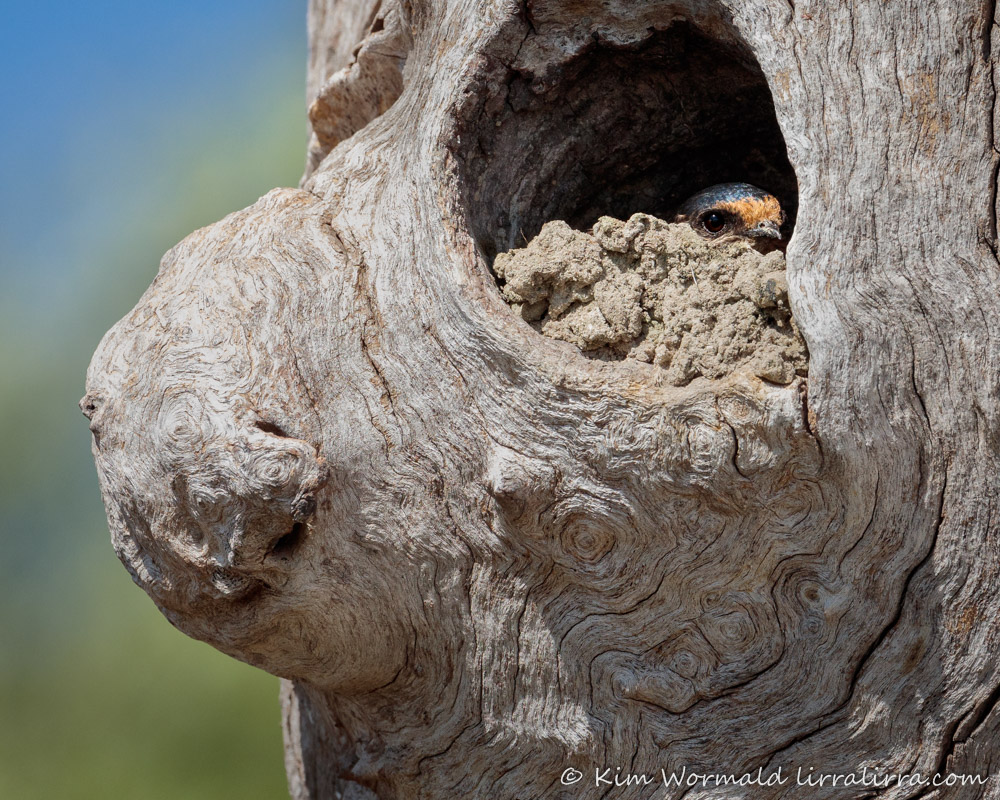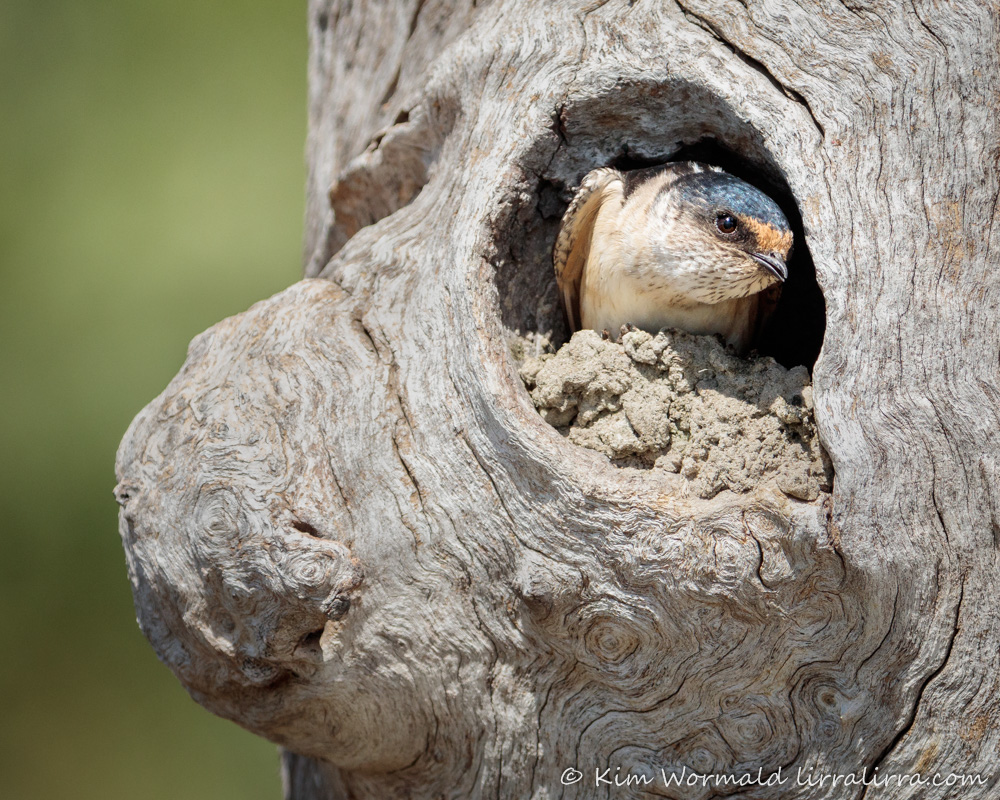Although these images show Tree Martins at a nesting hollow it was well out of the nesting season; they often re-visit their nesting sites throughout the year and I was lucky enough to be there when they did.
Tree Martin (Petrochelidon nigricans)
1/1000, f/8.0, ISO 800
I spent several hours watching these busy Tree Martins checking their real estate at Lake Paika in the Riverina district of far south west New South Wales. They spent a long time flying around the stag, speeding like Welcome Swallows. As I watched a few birds perched at the edge of the hollow while a smaller number entered the hollow to make sure all was well inside and out. I though this one looked cute the way it is peeking out.
Tree Martin (Petrochelidon nigricans)
1/1600, f/6.3, ISO 800
~
Tree Martins are similar species to Welcome Swallows and to last week’s Fairy Martins. Tree Martins have distinct reddish foreheads and black crowns with a black patch between the bill and the eye. Welcome Swallows have a reddish throat patch while Tree Martins have dark streaks, which I think look attractive.
The three species can be identified in flight by the colour of their rumps: Welcome Swallows have dark rumps, Fairy Martins’ rumps are white while Tree Martins’ rumps are off-white. When perched, Tree Martin’s tails are shorter than their wing tips. They are about 10-12cam and weigh about 15g.
~
Tree Martin (Petrochelidon nigricans)
1/1600, f/7.1, ISO 800
It is a particularly beautiful hollow with its intricate gnarls and whorls. The opening must have been a bit too large for comfort so the parent birds collected mud from the edge of the lake and used it to decrease the size of the entrance, which must now be about 5cm in diameter.
I took some images from different angles where the gnarl looked like an indistinguishable blob in the centre of the trunk. I gradually crept around the tree until the the gnarl became a feature of the image. By some careful stretching and leaning I was able to capture some shots where the gnarl looked good and the background wasn’t distracting. I’ve used three different f/shops in these images, and prefer f/8.0 because of the deeper depth of field.
Although Tree Martins are found across Australia their numbers are decreasing due to the logging of trees with hollows, clearing, and possibly the expanding range of Common Starlings which also nest in tree hollows.
These little birds look quite genteel until they open their bills ridiculously wide, as in the feisty image above, an ability which is a fabulous asset when catching insects on the wing.
Happy birding
Kim
~ thank you for visiting and commenting
~ if you would like to join the subscribers receiving a weekly email when lirralirra is updated, please use the ‘subscribe’ box above right




Great job Kim of this little fellow , she/he looks to me like she/he is telling some intruder to beware, pretty colors also, your birds and flowers over there are so brightly colored, Dona
Thanks Dona. I think you’re right about the message the martin is giving. We are very lucky with our wildlife and flowers, very lucky indeed.
Wow! They are all gorgeous but the pic with its beak open is just incredible! So brilliant! I adore it <3
Thanks Alyssa! They are gorgeous little birds, with mouths that are much bigger than we realise!
Fantastic photos as always ! Also love your description and interesting information ! Great work
Thank you Catarina, your comment has inspired me for the next edition
That is an impressive gape.
Love their household modifications too.
Haha! I love the thought of their little wall as ‘household modifications’, which it clearly is.